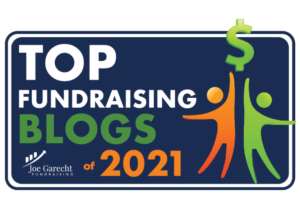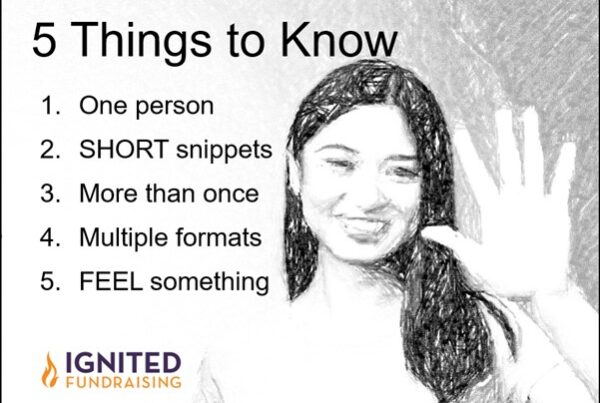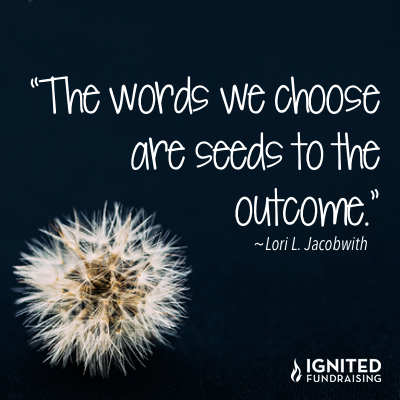Communication.
I’m in the process of writing a short tips booklet about ways to enhance communication to have the most effective individual donor program. I’ll have the e-Book ready soon but in the meantime, here’s the first excerpt:
Communication that is powerful, clear and compelling is absolutely critical for success. I break communication into four key areas:
1. Sharing Your Story. This is critical. You must be able to let the community know who, exactly, your organization serves, and what is missing for you to keep doing your work. Doing this in an emotionally connecting way is what will allow your organization to stand apart from others.
Telling a story can be done in a few sentences and the very best stories are less than two minutes in length. Stories paint a picture of the person you are talking about and about your work. I often work with organizations on storytelling and I know that this is a “muscle” that needs constant exercise. Tell stories at your board meetings, staff meetings, at volunteer meetings, on tours, at events, on your website – everywhere. Allow others to feel as connected to your work as you do.
2. Asking or Inviting Others To Participate. It sounds simple: Ask people for time, talent, stuff or money to support your organization. I see people stumble when asking all the time. They are nervous, they expect me or someone else to say no and they make the invitation all about themselves. And guess what? They often receive a no.
I consider asking both an art and a science. The person being asked must feel welcome, and they must know very clearly what you need. The conversation must be meaningful and not totally centered on the “ask.” A good “asker” gets a “yes” often; a great asker rarely has to ask—the other person often offers before “the ask” is even made. Which are you?
3. Cultivation or Maximizing Your Relationships. There are both internal and external people to pay attention to, to keep connected and to maximize their relationship with you. Does your organization treat them all the same way?
External: Communication with your volunteers and donors about the good news and the not so good news can make a huge difference in how much time or money is given. Sharing information about what’s missing, who you had to turn away today, or who made you proud of the work you do – communication about these real topics and more will keep real people engaged and connected. Communication is especially critical on your website, via email, in your newsletter and direct mail pieces.
Internal: Communication clearly with your board and staff about expectations in terms of supporting your fundraising programs can take a mediocre fundraising effort to a stellar effort. I often work with organizations to develop an accountability structure that gets reported on each month by both the board and the staff. Transparency about what it takes to get the job done and who is doing the job, will create a more engaged and successful fundraising program.
Join me for a fun hour to focus on communication on September 24 at 11 am. Special guest speaker, Barbara McAfee, keynote speaker, performer and voice coach will take members through The Five Voices of Leadership so you can maximize ALL of your relationships.
4. Data Management. Your donor database is as important as the money you have in the bank. How do you track your donor information? Do you have more than just you keeping good records? Is donor communication something everyone is part of, or just you? Do you know how managing your data can make you a better fund development professional? All contacts with donors, whether personal visits, phone calls, board meetings, emails—all of that information is crucial to taking a good development effort and turning it into an extraordinary one.
Watch for next week’s excerpt from 9 Tips for A Successful Individual Donor Campaign: Tip #1: “Successful individual donor campaigns are led by key volunteer and/or staff leadership”.







What a fantastic post! I agree that #1, “Sharing Your Story,” is critical because it enables an emotional connection with donors. Unfortunately, I think that #4, “Data Management,” is the most overlooked, and potentially the most important element. Segmentation of donor databases is one of the best ways to stretch limited dollars and assure a profitable campaign.